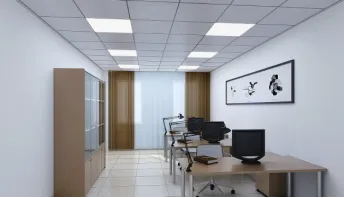- Afrikaans
- Albanian
- Amharic
- Arabic
- Armenian
- Azerbaijani
- Basque
- Belarusian
- Bengali
- Bosnian
- Bulgarian
- Catalan
- Cebuano
- Corsican
- Croatian
- Czech
- Danish
- Dutch
- English
- Esperanto
- Estonian
- French
- German
- Greek
- Hindi
- Indonesian
- irish
- Italian
- Japanese
- Korean
- Lao
- Malay
- Myanmar
- Norwegian
- Norwegian
- Polish
- Portuguese
- Romanian
- Russian
- Serbian
- Spanish
- Swedish
- Thai
- Turkish
- Ukrainian
- Uzbek
- Vietnamese
kol . 06, 2024 08:17 Back to list
Exploring the Concept of Tile Grid Ceiling in Interior Design and Architectural Spaces
Understanding Tile Grid Ceiling A Modern Design Element
In the world of interior design and architecture, the concept of ceiling design has evolved significantly over the years. One innovative and aesthetically pleasing option that has gained popularity is the tile grid ceiling. This design feature not only enhances the visual appeal of a space but also contributes to its functionality. This article delves into the characteristics, benefits, and installation aspects of tile grid ceilings.
What is a Tile Grid Ceiling?
A tile grid ceiling, often referred to as a drop ceiling or suspended ceiling, consists of a framework of metal grids that support lightweight tiles. These tiles can be made from a variety of materials, including mineral fiber, metal, gypsum, or even wood. The tiles are typically available in numerous styles, colors, and textures, allowing for a high degree of customization to fit different interiors.
Aesthetic Appeal
One of the primary reasons for the growing popularity of tile grid ceilings is their aesthetic versatility. Designers can choose from a wide array of tile designs—ranging from sleek and modern finishes to textured, rustic patterns. This adaptability allows tile grid ceilings to complement various interior themes, from corporate offices to residential spaces and more.
Moreover, the grid itself can be painted or customized to match the overall decor, further enhancing the ceiling’s visual impact. An intriguing geometric design created by the grid can draw attention upwards, making a space feel more expansive and inviting.
Functional Benefits
Apart from their aesthetic qualities, tile grid ceilings offer several functional advantages
1. Acoustic Control Many tile materials are designed to absorb sound, making them ideal for spaces that require noise reduction. This is particularly beneficial in commercial environments like offices, schools, and theaters, where sound management is critical.
2. Ease of Access A tile grid ceiling provides easy access to plumbing, electrical wiring, and HVAC systems. If maintenance is required, tiles can be easily removed and replaced without the need for extensive construction work, saving time and reducing costs.
tile grid ceiling

3. Insulation Certain tiles provide thermal insulation, which can help regulate indoor temperatures. This results in energy savings and increased comfort for occupants.
4. Concealment An unsightly ceiling can detract from the overall beauty of a room. Tile grid ceilings can effectively conceal imperfections, wiring, or ductwork, creating a cleaner and more finished look.
Installation Process
The installation of a tile grid ceiling is relatively straightforward, making it a favorite among DIY enthusiasts. The process generally involves
1. Planning and Measurement Begin by measuring the area where the ceiling will be installed. This step is essential to determine the quantity of materials needed and to create a proper layout.
2. Installing the Grid The metal grid framework is attached to the existing ceiling using hangers or wall angles. The grid must be level and secure to ensure the tiles are evenly placed.
3. Inserting Tiles Once the grid is in place, tiles can be inserted into the grid openings. This step is where the design aspect shines, as tiles can be mixed and matched to create unique patterns or arrangements.
4. Finishing Touches After all tiles are installed, any additional features such as lighting fixtures can be added, enhancing the ceiling's functionality and design.
Conclusion
Tile grid ceilings represent a perfect blend of aesthetics and practicality. Their diverse design options, acoustic benefits, ease of installation, and access to utilities make them a valuable addition to any modern interior space. Whether for a home, office, or commercial establishment, tile grid ceilings are an excellent choice for those looking to enhance their environment creatively and efficiently. As trends in interior design continue to evolve, tile grid ceilings are sure to remain a popular choice among architects and designers alike.
-
Transform Interiors with PVC Gypsum Ceiling: A Stylish, Durable, and Moisture-Resistant SolutionNewsMay.19,2025
-
The Smart Interior Upgrade: Discover the Durability and Versatility of Gypsum Ceiling Access Panel SolutionsNewsMay.19,2025
-
The Smart Choice for Interior Design: Discover the Value of PVC Gypsum Ceiling SolutionsNewsMay.19,2025
-
Mineral Fiber Ceiling Tiles: The Smart Blend of Performance and AestheticsNewsMay.19,2025
-
Mineral Fiber Ceiling Tiles: The Superior Choice Over Gypsum for Sound and Fire SafetyNewsMay.19,2025
-
Mineral Fiber Ceiling Tiles: Eco-Friendly Strength and Style for Every CeilingNewsMay.19,2025







